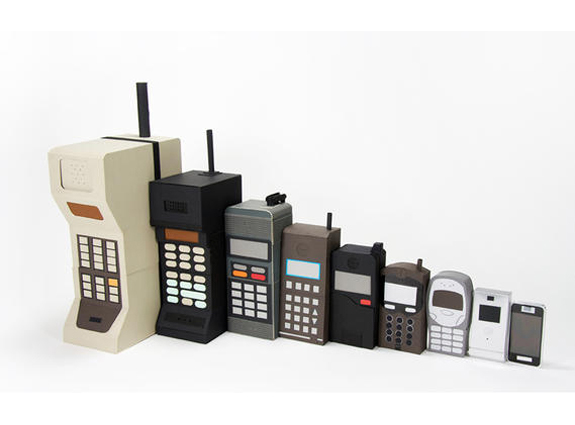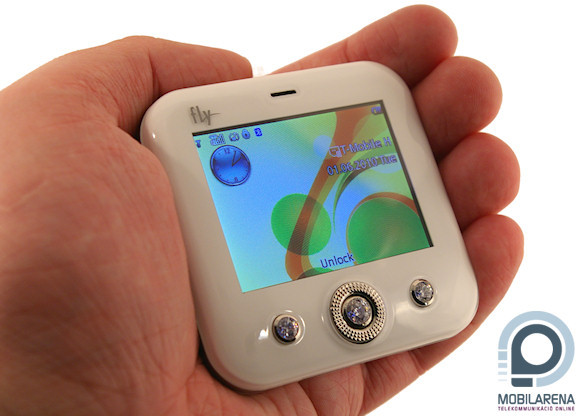Transformation of smartphones, or is it convenient to call on the tablet

IBM Simon (officially considered the first smartphone - the concept was introduced in 1992) and Apple iPhone 4S.
The display size of a smartphone is a criterion by which model A will always be different from model B. Even if one day the perfect smartphone, the “ultimate killer of all” appears on the market, competitors will only have to copy it and release it with a different display size. Moreover, there will be no competition between smartphones with identical functionality if there is a difference in screen diagonals. There will always be buyers who want a screen larger or smaller, or average in all respects.
The ideal screen size does not exist in nature. All models, from three-inch to six-inch (and more) are in demand. The question is, which sizes are more popular, is there such a diagonal of the smartphone display that most buyers would prefer? A total of 7,300 people took part in the survey on PhoneArena.com ( source ) and for 29.45% of users the ideal display size for a smartphone was 5 ". In second place was 23.43% with 4.7". However, if you add up the voices of those who choose a display less than 5 inches, you get 33.12%. The vast majority choose really large smartphones.
You can agree with the opinion that the ideal sizes are between 4.5 "and 5.5", or remain in the minority, but the fact remains - the market is sensitive to the emerging trend. Smartphones with a screen size smaller than 4 "in the diagonal and larger than 5.7" receive only negligible support. Rumors that the dimensions of the iPhone 6 display will be equal to 4.7 ", as well as 5.5", only reinforce the confidence of Western publications that there is "no life" outside this range.
But we do not agree with this opinion

The evolution of smartphones is usually represented in this way, but now the picture is becoming mirrored.
A few years ago, compact smartphones dominated the market. Apple dictated fashion and for many years determined the "ideal" screen size of a smartphone at 3.5-4 inches. In surveys among active smartphone users, this display size range also dominated. However, the actions of other brands - for example, Samsung - have changed the idea of the optimal size of the device. The success of the iPad in some way predetermined the process of falling demand for the “ideal screen” - the active growth in sales of tablet computers spurred manufacturers to increase the diagonal of the screen of phones. At the same time, tablets, actively conquering a new market, began to decrease in size. Sooner or later, all market players would meet at some mid-inch point.
The Svyaznoy Analytical Center has prepared such statistics. In 2013, smartphones with a diagonal of 3-4 inches prevailed in the Russian market - half of all smart phones sold a year ago had this display size. In the first half of 2014, the pace of implementation of such devices decreased by 11%. Their share in total smartphone sales was less than a third. In 2014, only the gadget segment with a screen size of 4 inches or more is growing on the market.
The most dynamic are phablets - smartphones with a screen size of more than 5 inches. They have become the fastest growing category in the market of smart phones, having outstripped LTE-enabled devices and multi-sim smartphones in terms of growth. For 6 months, their sales increased by 283% to 911,000 devices, and the market share in units reached 9%, an increase of 3 times. Today on the market of “phablets” there are already more than 250 models of gadgets.
The phone should be a phone, not a shovel

Smartphone Fly Q200 Swivel. 2.2 inches for aesthetes.
Remember, what joy a few years ago caused a smartphone that fits comfortably in a narrow pocket? Who just did not say that smartphones from 5 inches will be liked only by a narrow layer of fans of "big gadgets". Now the situation has changed dramatically, only the process of transformation of gadgets has not yet been completed. Phablets continue to increase in size. The highest growth in six months of 2014 was demonstrated by tablet phones with a screen diagonal of more than 6 inches - their sales increased by 760%, which exceeds the general rate of phablet sales by more than 2.5 times.
This seems unbelievable, given that the share of owners of two or more mobile devices is growing annually. It would seem that all the extra inches of the tablet screen should satisfy the needs of the user. But the screen of smartphones is driven by several factors: the development of various types of content, for example, HD-video format, which is more convenient to view on a large screen; launch of 3G and 4G networks, allowing you to consume content through mobile devices; increasing the importance (and quality) of the camera for the smartphone user and the emergence of additional photographic functions. The 5-inch smartphone is still superior in mobility to the tablet, which adds points to it.
Call from 7 inches? Seriously?!

The expression on their faces indicates that happiness lies in size.
Meanwhile, in recent years, a trend has been observed on the tablet PC market, which is the opposite of the development trend of smartphones - decreasing the diagonal of displays. Increasingly, new models are called “tablet and phone in one device”.
The proportion of tablets with a screen of less than 8 inches in the first six months of 2014 reached 60% (in the first half of 2013 it was 45%). Sales of compact tablet computers grew by 83%, which is 2.3 times more than the growth in sales of such devices in general. At the same time, the market for tablets with a diagonal of more than 10 inches increased by only 5%. The average tablet screen size last year was 7.1 inches, and a year earlier - 7.8 inches.
We are witnessing an amazing process - the gradual merger of the two categories of gadgets. According to our estimates, in the future, tablets and smartphones will turn into a single type of multifunctional devices, divided into 3 subcategories. The first is compact smartphones with a diagonal of up to 5.5 inches. The second - tablets with a large screen of 8.9 inches, relevant for watching videos and games. The most significant changes will occur in the third subcategory - the segment of multifunctional gadgets with a screen diagonal of 6-9 inches.
What will they become?

If you don’t like the question “what display size do you choose?” answer the counter: "Google glass or smart watch?"
The new device subcategory will bring together the most important features of smartphones and tablets. In the vast majority of gadgets in this subcategory, a GSM module will be presented, which today is not in all compact tablets. Obviously, this can lead to a decrease in the share of those who use multiple mobile devices.
However, let's not forget that users do not evolve as fast as gadgets. Ultimately, the use of new devices rests on the limitations of ergonomics. We have reached a certain limit in the usability of smartphones and tablets and are trying to overcome it with the help of additional devices. Smart watches and smart glasses not only expand the functionality of smartphones, but also facilitate our interaction with gadgets of various form factors.
The growing diagonal of the display and the trend for “smart” gadgets that facilitate the use of not-so-comfortable smartphones, once again shows how far we are from the emergence of a single fully functional device. The market remains so diverse that it is ready to satisfy the needs of almost any user (unless you are a fan of push-button phones). Good is bad? In an era when computer microchips will be implanted directly into the brain, such questions will cease to worry us, but for now, we continue to monitor the Russian and global markets. Perhaps in a few years, global trends will surprise again.
